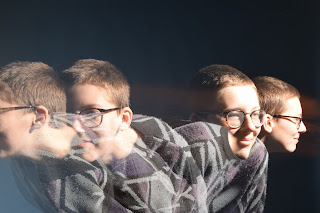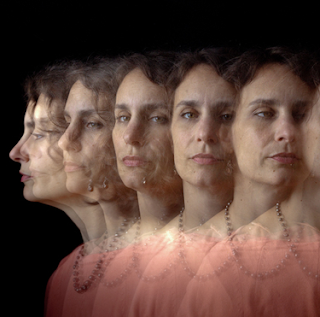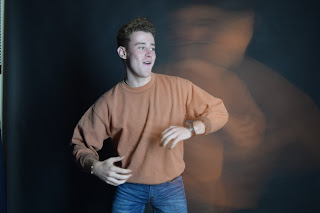In today's lesson our task was to capture images outside the studio of multiple exposure. I shot all my images on the camera settings of ISO 200, a shutter speed of 1/100, and an f stop of 5.6. We watched a video on how to change our camera settings to fit the 'double exposure' effect, however we decided to photograph two separate images, and then combine them in photoshop as I didn't have all of the different camera settings needed on my camera- despite this, I could and did change my exposure and spot metering camera settings. In order to then edit my images I opened the photos in photoshop, and pulled my pictures on top of each other, whilst resizing them when needed. Once I did this I then changed the photoshop settings from 'normal' to 'screen'.
I enjoyed this lesson, as I like the outcome of my images despite them all looking 'green' as I photographed images of trees to go over the top of them, as this would fit my project theme.
I enjoyed this lesson, as I like the outcome of my images despite them all looking 'green' as I photographed images of trees to go over the top of them, as this would fit my project theme.
My best image of the day:
This image is my best of the day as you can clearly see how the tree fits into the individual, the two imaged merge well together. The yellow writing on my subjects t-shirt jumps out of the image, when contrasted with the green leaves. Additionally, the gap in the individual's head may suggest that she is missing something mentally stimulating, which she cannot have (e.g. education.) The branches across the subjects face appear to be slightly red, this almost looks like veins across her face, this may imply that nature is in our veins, and we need it to survive. The subject's coat appears to be made out of leaves, I like how this looks, as it appears to be realistic.
My worst image of the day:
The above image is my worst photograph of the day. Although I do think the colours fit the individual well, the background is not completely white, this would have been due to the blue sky coming through on one of the images slightly, then allowing the leaves image to be seen. In order to correct this I would have to reshoot this image again, this image ensuring that the background is perfectly white, in order to avoid the image of the leaves coming through on the background. Additionally, the leaves appear slightly too dark, I could have changed this using the curves tool on photoshop, or the brightness tool, again on photoshop- or I could have initially edited my camera settings by making the f stop higher, so less light would be allowed into the camera lens, and then consequently in the image.
Progression:
Overall, I believe my shoot went well, I would like to use this technique in my project, as I can show how individuals and nature combine to one; moreover, I would photograph images of trees and buildings to merge with the image of the individual. When using this technique in my project I would ensure my camera settings were changed to fit the situation, in order to control how much light I let into my images. Moreover, I would also like to try shoot the images of the individuals in the studio, again so I can control the lightning to a higher degree, and ensure the background is completely white.


















































